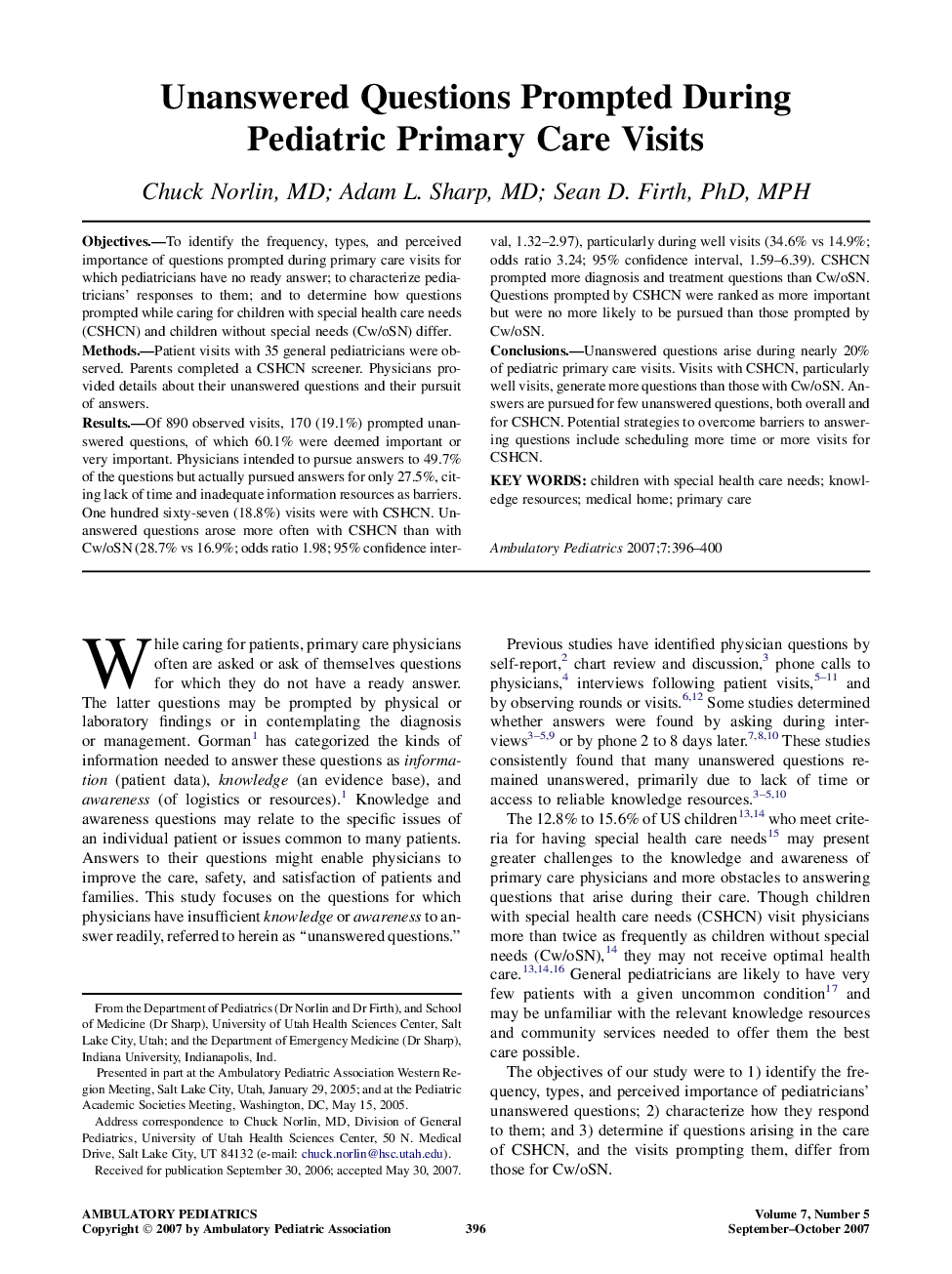| کد مقاله | کد نشریه | سال انتشار | مقاله انگلیسی | نسخه تمام متن |
|---|---|---|---|---|
| 4140609 | 1272261 | 2007 | 5 صفحه PDF | دانلود رایگان |

ObjectivesTo identify the frequency, types, and perceived importance of questions prompted during primary care visits for which pediatricians have no ready answer; to characterize pediatricians' responses to them; and to determine how questions prompted while caring for children with special health care needs (CSHCN) and children without special needs (Cw/oSN) differ.MethodsPatient visits with 35 general pediatricians were observed. Parents completed a CSHCN screener. Physicians provided details about their unanswered questions and their pursuit of answers.ResultsOf 890 observed visits, 170 (19.1%) prompted unanswered questions, of which 60.1% were deemed important or very important. Physicians intended to pursue answers to 49.7% of the questions but actually pursued answers for only 27.5%, citing lack of time and inadequate information resources as barriers. One hundred sixty-seven (18.8%) visits were with CSHCN. Unanswered questions arose more often with CSHCN than with Cw/oSN (28.7% vs 16.9%; odds ratio 1.98; 95% confidence interval, 1.32–2.97), particularly during well visits (34.6% vs 14.9%; odds ratio 3.24; 95% confidence interval, 1.59–6.39). CSHCN prompted more diagnosis and treatment questions than Cw/oSN. Questions prompted by CSHCN were ranked as more important but were no more likely to be pursued than those prompted by Cw/oSN.ConclusionsUnanswered questions arise during nearly 20% of pediatric primary care visits. Visits with CSHCN, particularly well visits, generate more questions than those with Cw/oSN. Answers are pursued for few unanswered questions, both overall and for CSHCN. Potential strategies to overcome barriers to answering questions include scheduling more time or more visits for CSHCN.
Journal: Ambulatory Pediatrics - Volume 7, Issue 5, September 2007, Pages 396–400